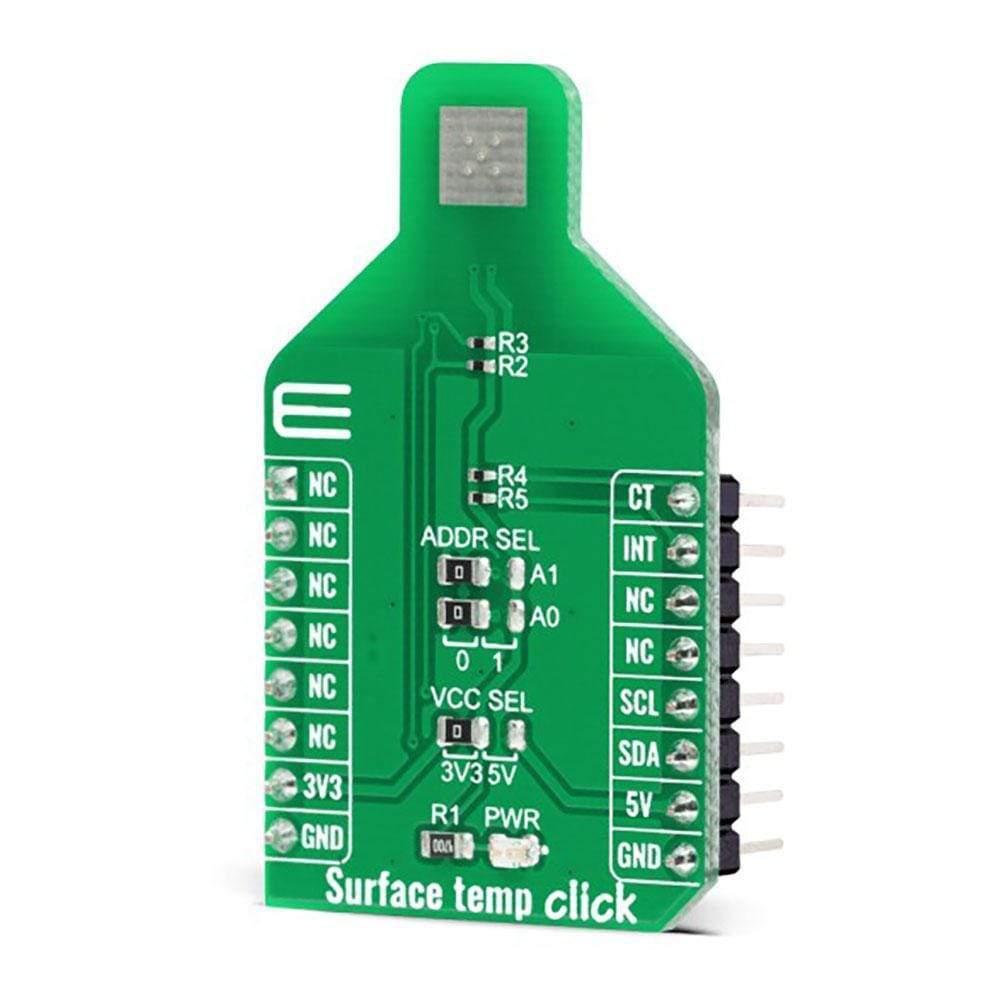
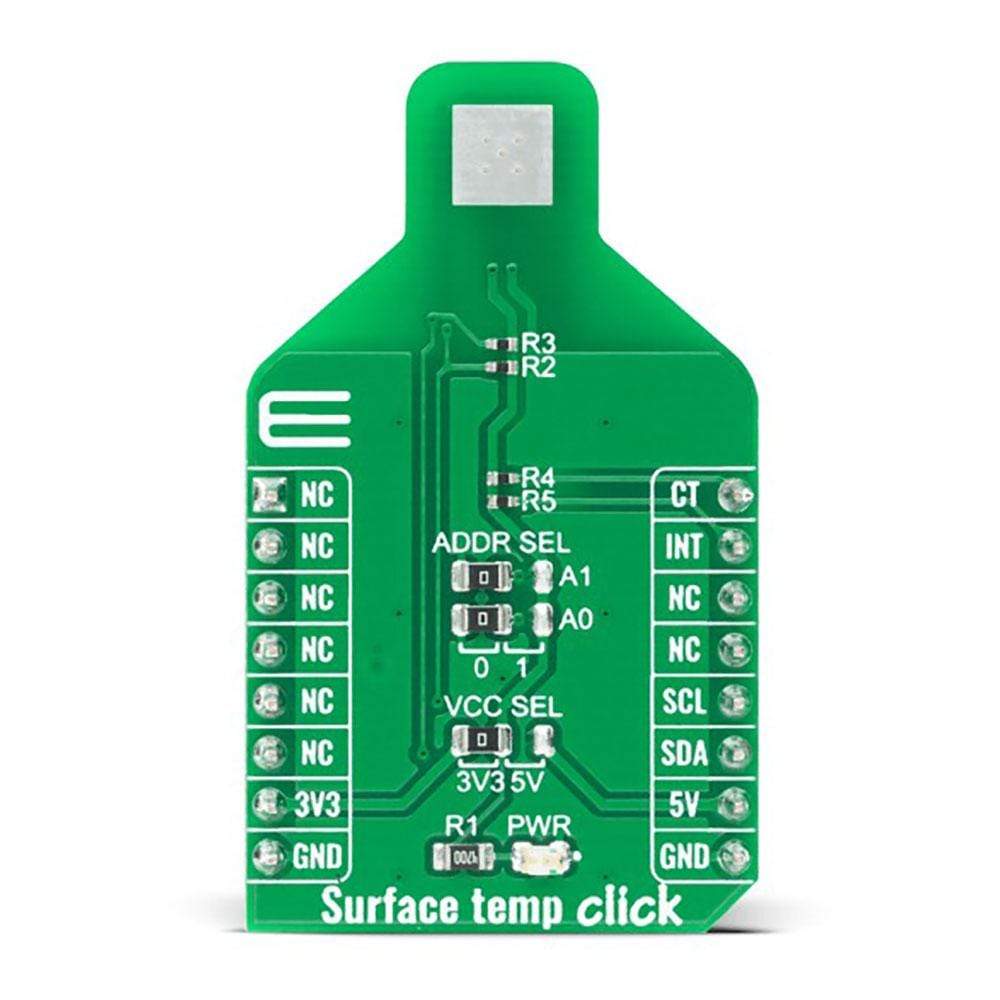
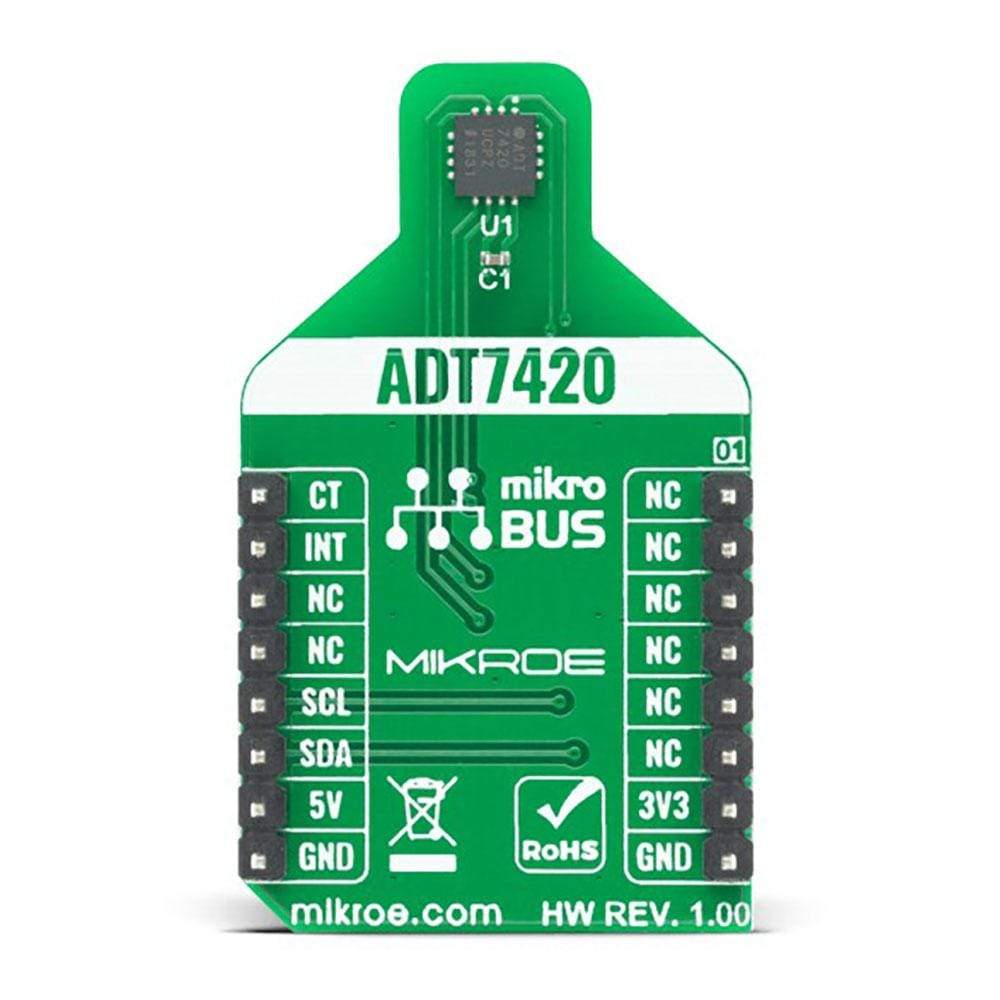
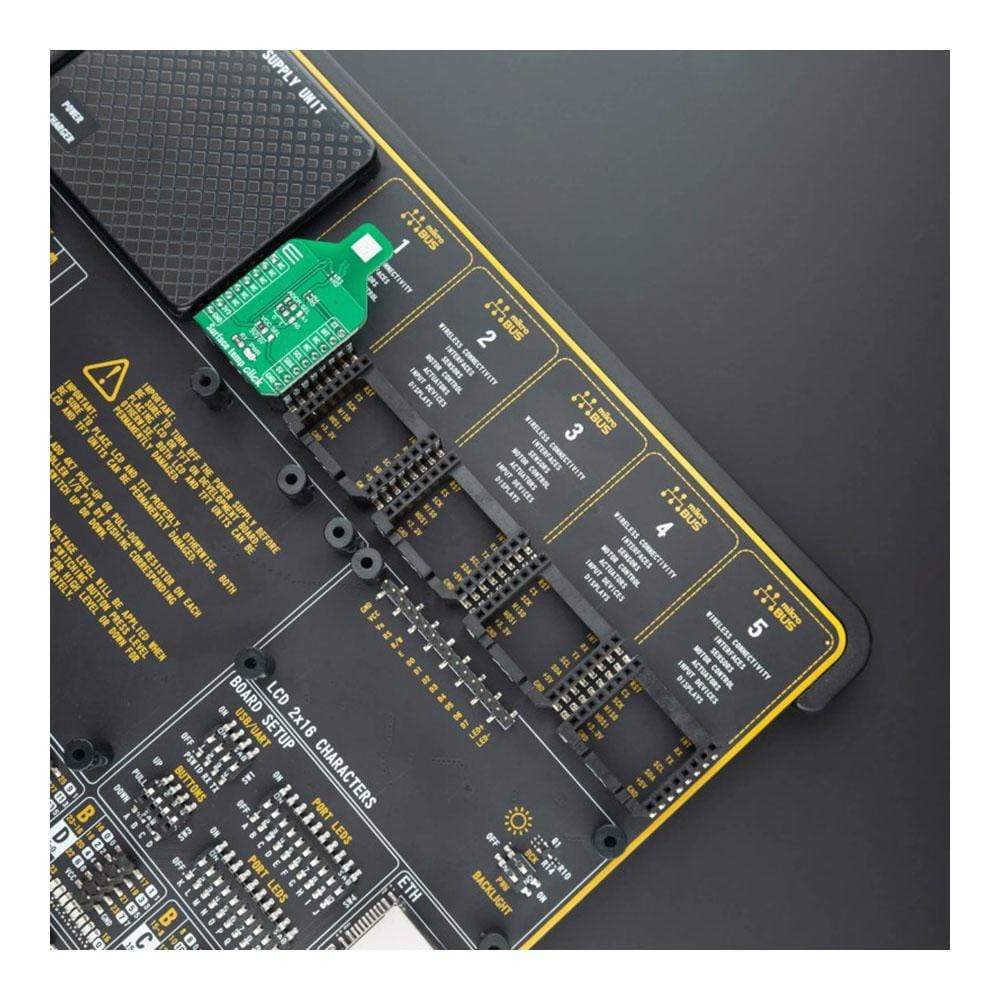
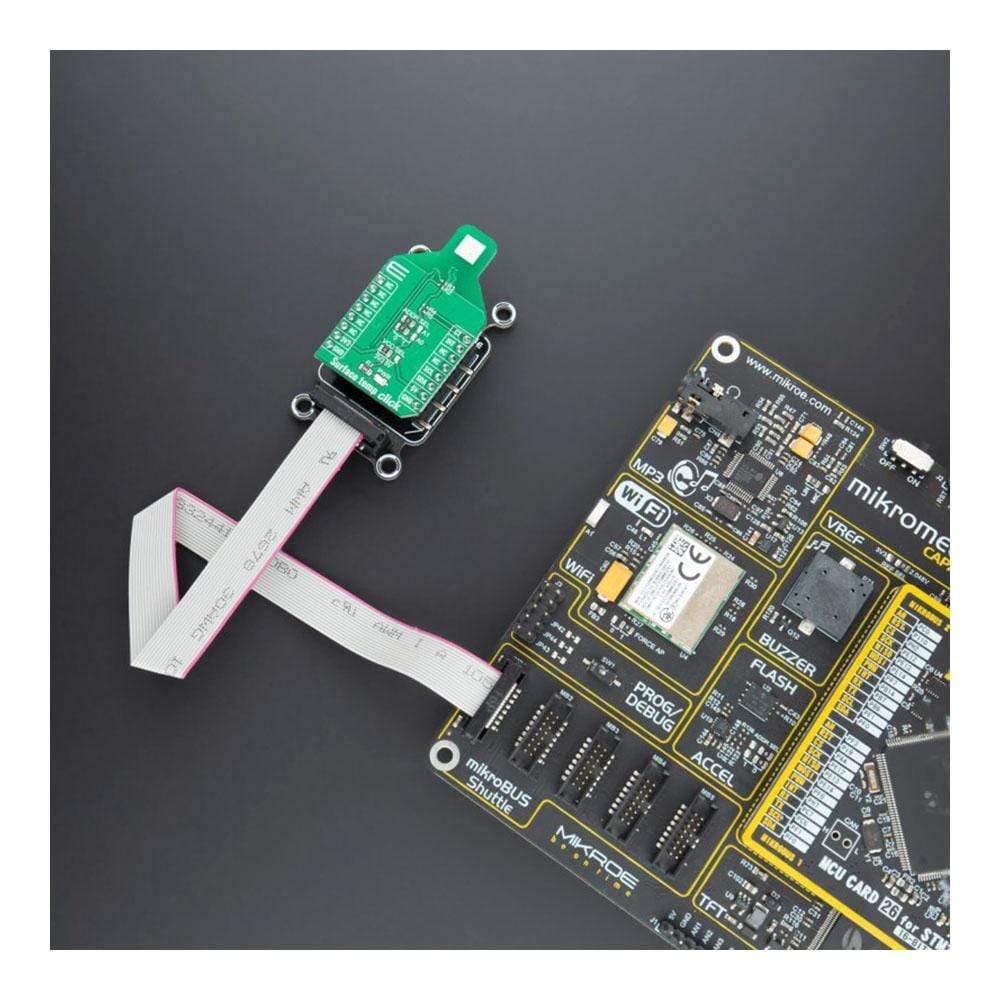
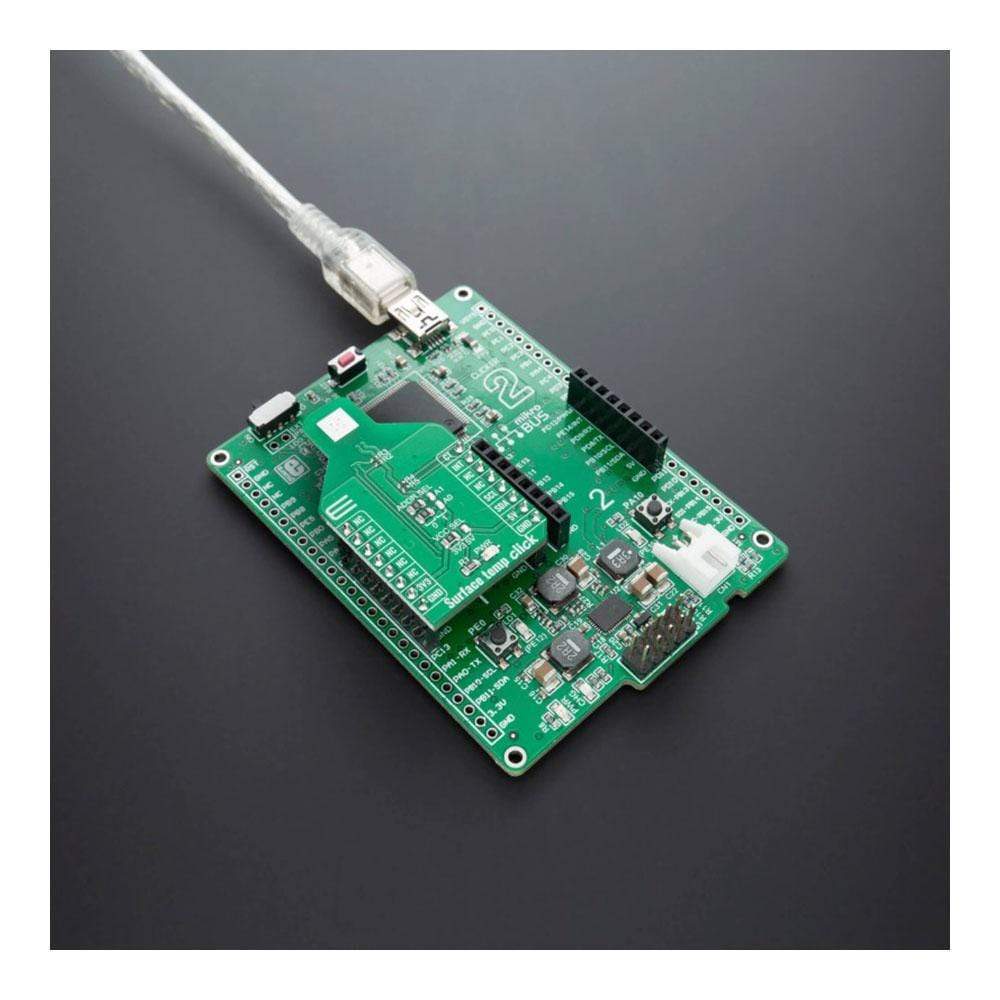
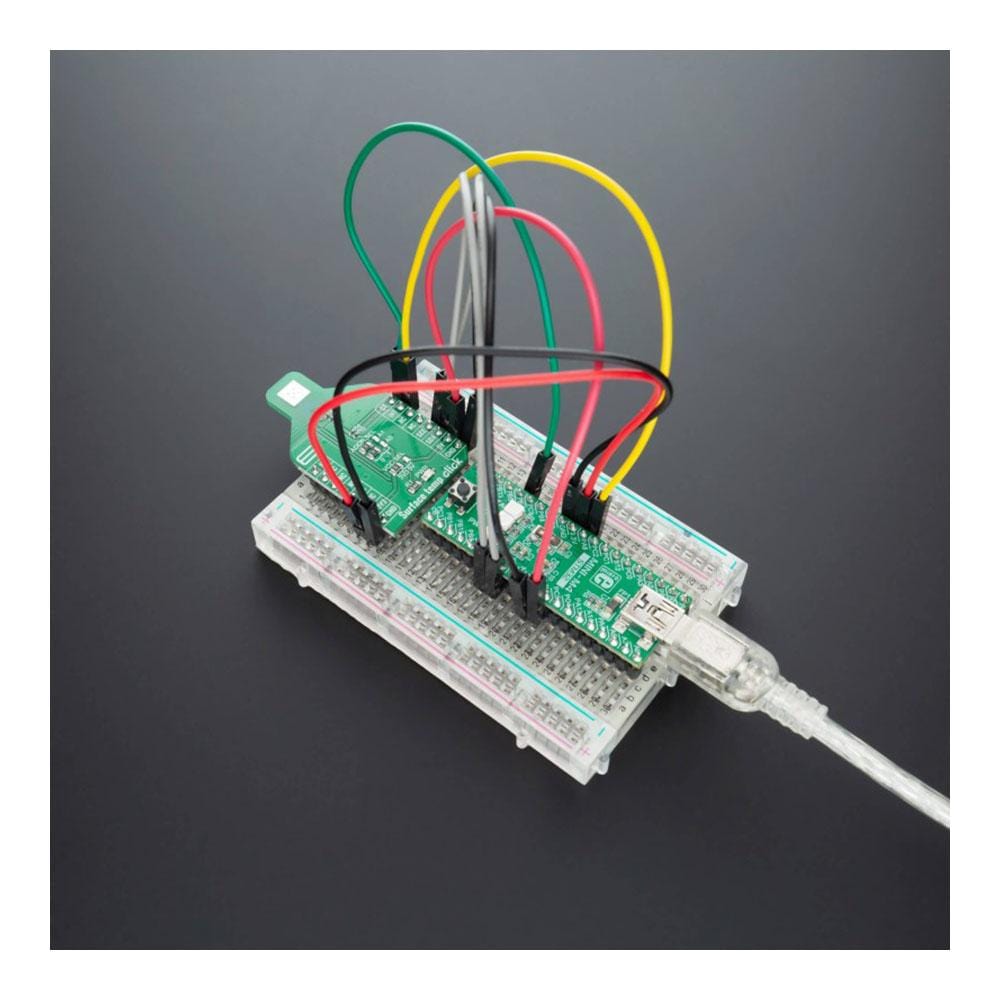
Overview
The Surface Temp Click Board™ is high accuracy digital temperature sensor Click Board™, offering breakthrough performance over a wide industrial range. It is equipped with the ADT7420 - an accurate 16-Bit Digital I2C temperature sensor from Analog Devices. It features high-temperature accuracy, ultralow temperature drift (0.0073°C), fast first temperature conversion on power-up, no temperature calibration/correction required, and more useful features which makes this Click Board™ a great choice for RTD and thermistor replacement, medical equipment, food transportation and storage, environmental monitoring, HVAC, and many more.
Downloads
Le Surface Temp Click Board™ est un capteur de température numérique haute précision Click Board™, offrant des performances révolutionnaires sur une large gamme industrielle. Il est équipé de l'ADT7420 - un capteur de température numérique I2C 16 bits précis d'Analog Devices. Il offre une précision de température élevée, une dérive de température ultra-faible (0,0073 °C), une première conversion de température rapide à la mise sous tension, aucun étalonnage/correction de température requis et d'autres fonctionnalités utiles qui font de ce Click Board™ un excellent choix pour le remplacement des RTD et des thermistances, les équipements médicaux, le transport et le stockage des aliments, la surveillance de l'environnement, le CVC et bien d'autres encore.
| General Information | |
|---|---|
Part Number (SKU) |
MIKROE-4205
|
Manufacturer |
|
| Physical and Mechanical | |
Weight |
0.025 kg
|
| Other | |
Country of Origin |
|
HS Code Customs Tariff code
|
|
EAN |
8606027380044
|
Warranty |
|
Frequently Asked Questions
Have a Question?
Be the first to ask a question about this.







